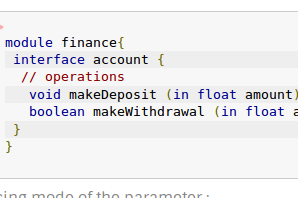


The uuidgen command requires a 48-bit node address as described in ISO/IEC 8802-3 (ANSI/IEEE 802.3). See the uuidgen(1) reference page for details of the interface.

The ATMI uuidgen command is similar to the DCE command with the exception that the -s option (which generates a UUID string as an initialized C structure), and the -t option (which translates an old style UUID string to the new format) are not supported. If both the ATMI and DCE uuidgen(1) commands are available, the DCE command can and should be used to generate the template (the DCE version will most likely have a machine-specific approach to getting the node address, as described below). This template is then used to create the IDL input file for the application (adding type definitions, constants, and operations). The output might look something like the following: $ uuidgen -i > simp.idl The uuidgen command is used to generate UUIDs. TxRPC adds transaction support for RPCs to the original X/OPEN RPC interface.Ī Universal Unique Identifier (UUID) is used to uniquely identify an interface. The X/OPEN Preliminary Specification for TxRPC Communication Application Programming Interface is also available from X/OPEN (see above). The programmer's guide available from OSF is OSF DCE Application Development Guide, published by Prentice-Hall (Englewood Cliffs, New Jersey, 07632). There are several books containing tutorials and programmer's guides that can be used, although most will not contain the latest features. The X/OPEN document is based on the OSF DCE AES/RPC document. Note that the X/OPEN TxRPC IDL-only interface is supported (parts of the document concerning the DCE binding and run time do not apply). The X/OPEN document is the ultimate authority on the language and rules adhered to for the BEA Tuxedo product in an ATMI environment. This book is available from the following. Changes Based on the TxRPC SpecificationīEA Tuxedo TxRPC supports the IDL grammar and associated functionality as described in Chapter 3 ("Interface Definition Language") of DCE: REMOTE PROCEDURE CALL (Doc Code: P312 ISBN 1-87).Using uuidgen to Create an IDL Template.This topic includes the following sections: Using the Interface Definition Language (IDL) Programming a Tuxedo Application Using TxRPC Programming a Tuxedo Application Using TxRPC > Using the Interface Definition Language (IDL) The functions Fx1 and Fx2 are placed in IM圜omInterface.Using the Interface Definition Language (IDL) This script outputs the google search URL required for search on edocs documentation.Also, IM圜omInterface inherits from IUnknown. The Interface, IM圜omInterface, is named.Every interface definition starts with an attributed section delimited by brackets.We import definitions from the IDL file.It contains the definition of interface IM圜omInterface, the same interface we discussed in the previous lesson, and IYourComInterface. The following Slideshow steps through an IDL file called IM圜omInterface.idl.

IDL can be used to specify COM interfaces and generate header files containing C++ class definitions that implement COM interfaces. Several industry-standard tools and techniques exist to assist with interface specification. This allows designers and developers to study the interface design and interactions before jumping into implementation. Separating interface specification from implementation is a standard development practice.


 0 kommentar(er)
0 kommentar(er)
